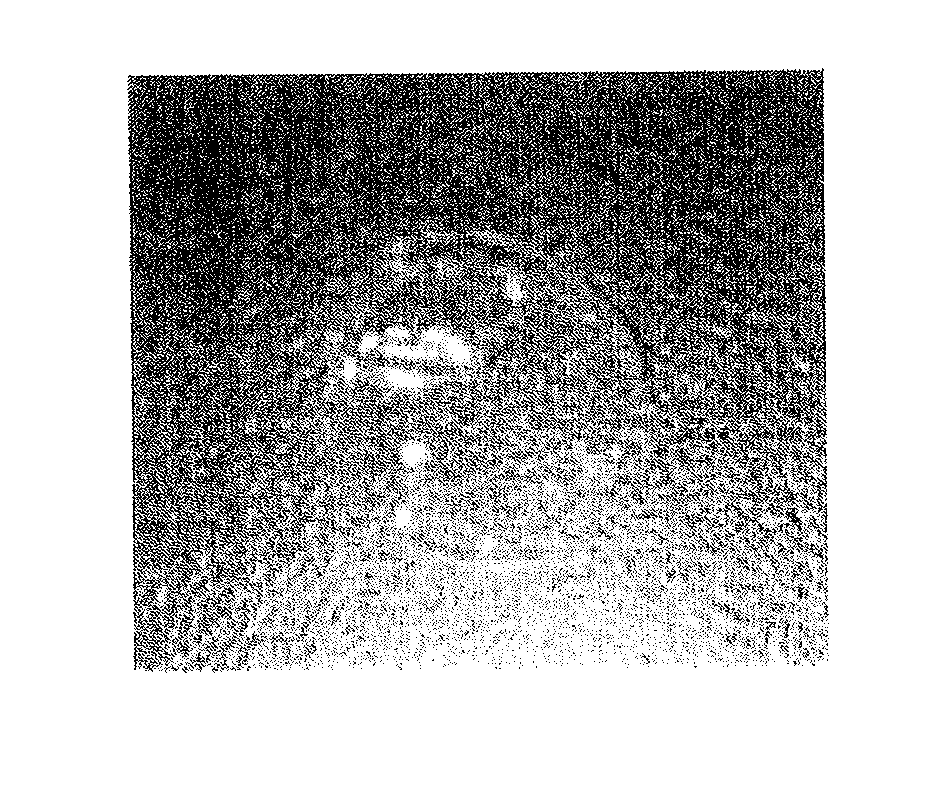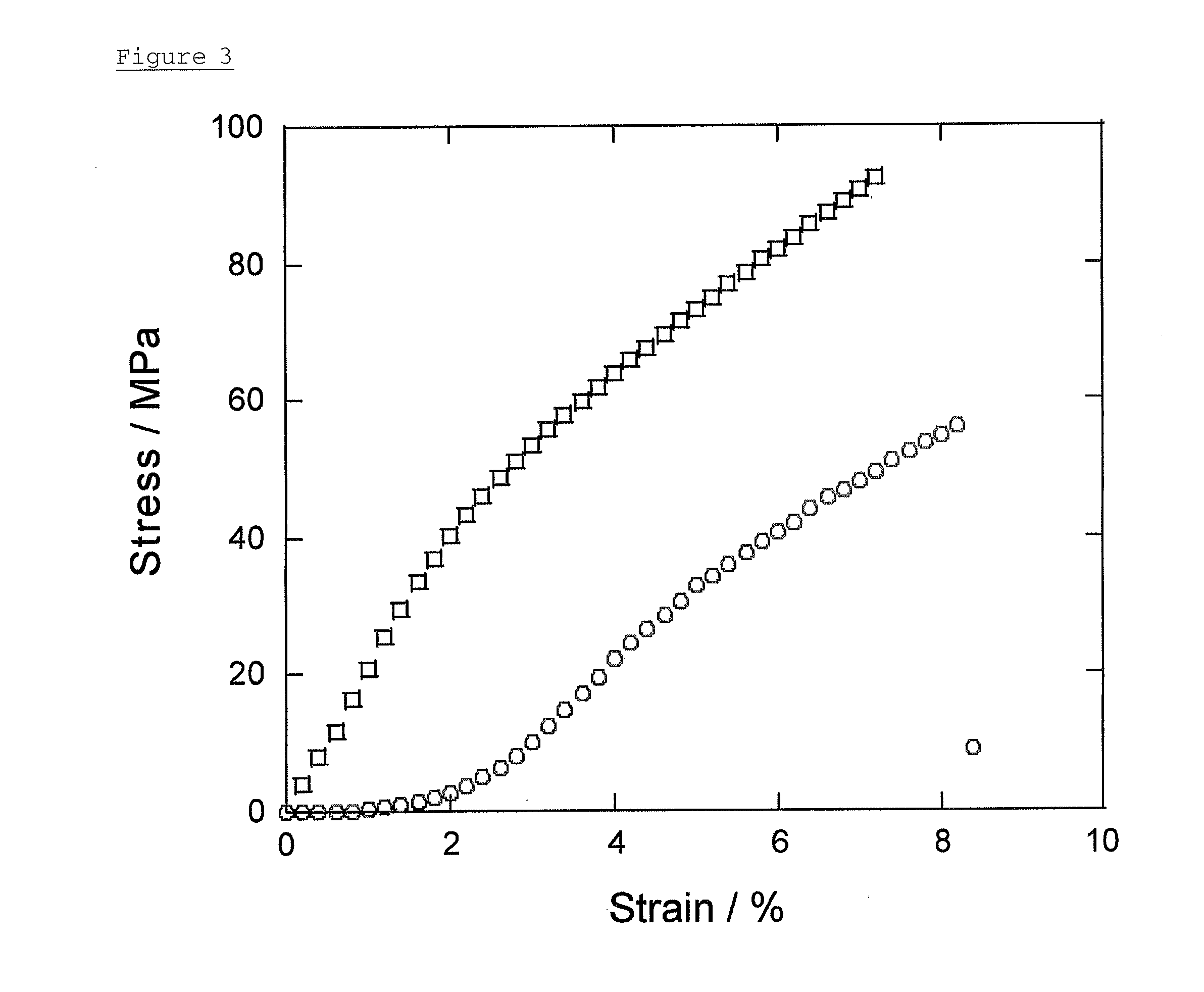Non-fibrogenesis collagen material and a manufacturing method thereof
a manufacturing method and collagen technology, applied in the field of non-fibrogenesis collagen transparent membrane, can solve the problems of insufficient strength of collagen-thin membrane, limited clinical use, insufficient collagen material, etc., and achieve the effects of high mechanical strength, easy cell morphology, and dramatic increase in tensile strength of transparent and non-fibrogenesis collagen membran
- Summary
- Abstract
- Description
- Claims
- Application Information
AI Technical Summary
Benefits of technology
Problems solved by technology
Method used
Image
Examples
preparing example 1
Preparation of Fish-Derived Collagen
[0101]A method for preparing tilapia scale collagen will be described hereinafter.
[0102]The tilapia scales were carefully washed with water, and further carefully washed in a 10% sodium chloride solution. Impurities such as fins were removed during washing, and then the tilapia scales were dried at room temperature. A water content ratio of the tilapia scales was 18.5% by weight. 1 kg of tilapia scales was dispersed in 9 kg of hydrochloric acid solution at pH 2, and the solution including the scales was gently stirred at 25° C., while maintaining a pH 2 by adding a 1M hydrochloric acid solution. Through this treatment, mineral elements included in the scales were disolved in the hydrochloric acid solution. The scales were collected by mesh, and then fully washed with purified water. Then, the hydrochloric acid solution at pH 2 was added to the scales so that the total weight of the whole was 4 kg.
[0103]Then, 24 g of pepsin (Wako Pure Chemical Indu...
example 1
[0105]In this Example, the non-fibrogenesis collagen transparent membrane was prepared from a collagen solution with a 1 mm thickness.
[0106]An acid solution at pH 3.0 was prepared by bubbling carbon dioxide in distilled water. The lyophilized collagen obtained in Preparing Example 1 was dissolved in the resulting acid solution so that the concentration became 1% by weight, in order to obtain a collagen solution. A silicone plate with a 1 mm thickness and a cylindrical hole of 18 mm in diameter was created, and the lower surface was covered by a silicone plate, to obtain a forming mold. The 1% by weight of the collagen solution was added dropwise to the cylindrical hole so that a height of the collagen solution became 1 mm, and dried over night at 28° C. A volume of the collagen solution before drying was 0.254 cm3, and a weight of collagen contained therein was 0.254 mg. A thickness of the dried non-fibrogenesis collagen transparent membrane was 8.7±4 μm. Therefore, the density of t...
example 2
[0107]In this Example, the cross-linked non-fibrogenesis collagen transparent membrane was prepared from the collagen solution with a 1 mm thickness.
[0108]The non-fibrogenesis collagen transparent membrane obtained in Example 1 and a 25% by weight of glutaraldehyde solution ware placed in a desiccator. The desiccator was vacuated and glutaraldehyde was evaporated. The non-fibrogenesis collagen transparent membrane was allowed to stand at 37° C. for 24 hours, and then was chemically cross-liked.
>
[0109]A light transmission rate of the non-fibrogenesis collagen transparent membrane prepared in Example 1 and the cross-linked non-fibrogenesis collagen transparent membrane prepared in Example 2, were measured. Each of the non-fibrogenesis collagen transparent membranes was attached to a cell culture dish (polystyrene dish) using tweezers, and scanned at a wavelength range of 300 nm to 700 nm using the POWERSCAN HT (DS Pharma Biomedical Co., Ltd).
[0110]The results are shown in FIG. 2. The ...
PUM
| Property | Measurement | Unit |
|---|---|---|
| Pore size | aaaaa | aaaaa |
| Density | aaaaa | aaaaa |
| Transparency | aaaaa | aaaaa |
Abstract
Description
Claims
Application Information
 Login to View More
Login to View More - R&D
- Intellectual Property
- Life Sciences
- Materials
- Tech Scout
- Unparalleled Data Quality
- Higher Quality Content
- 60% Fewer Hallucinations
Browse by: Latest US Patents, China's latest patents, Technical Efficacy Thesaurus, Application Domain, Technology Topic, Popular Technical Reports.
© 2025 PatSnap. All rights reserved.Legal|Privacy policy|Modern Slavery Act Transparency Statement|Sitemap|About US| Contact US: help@patsnap.com



